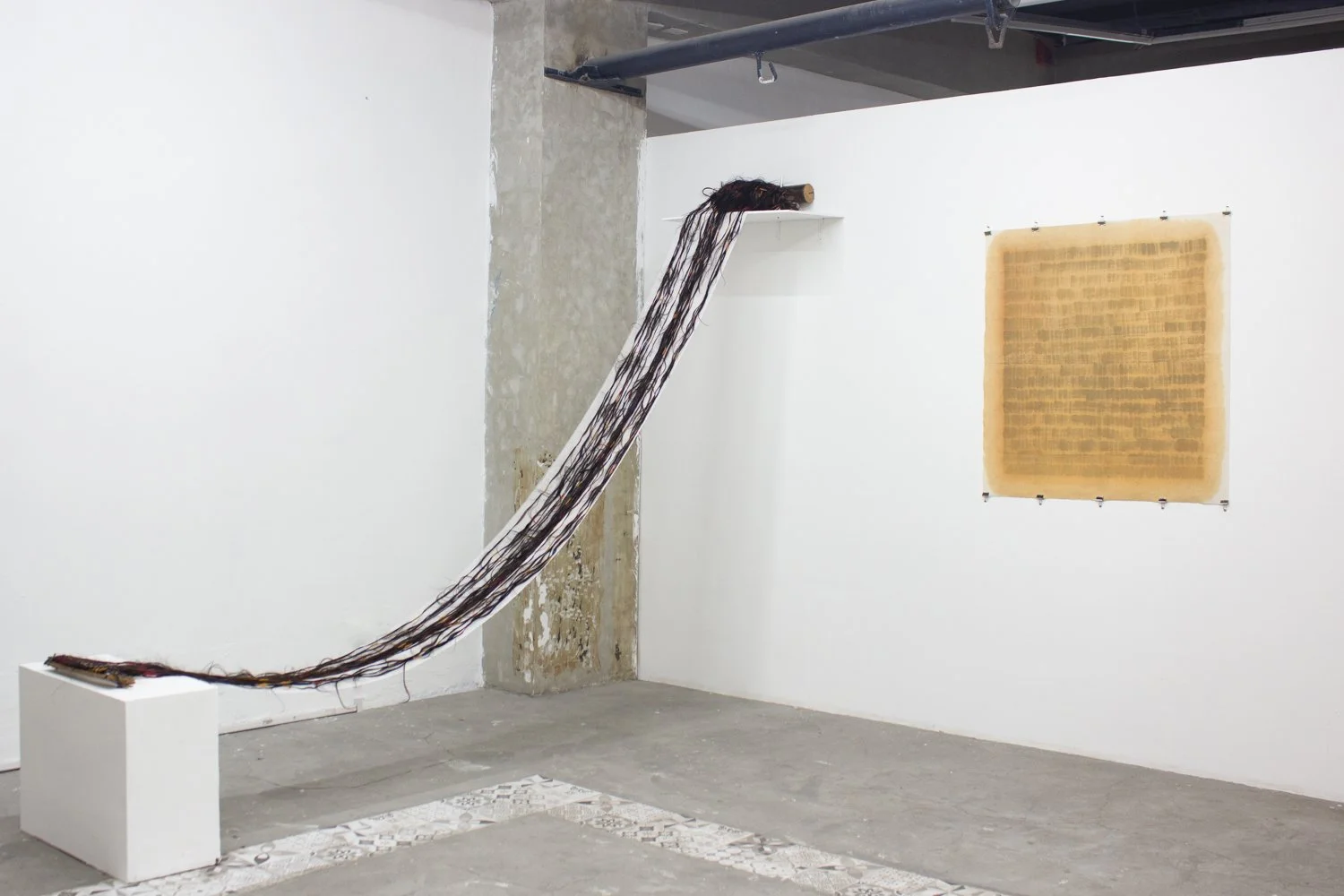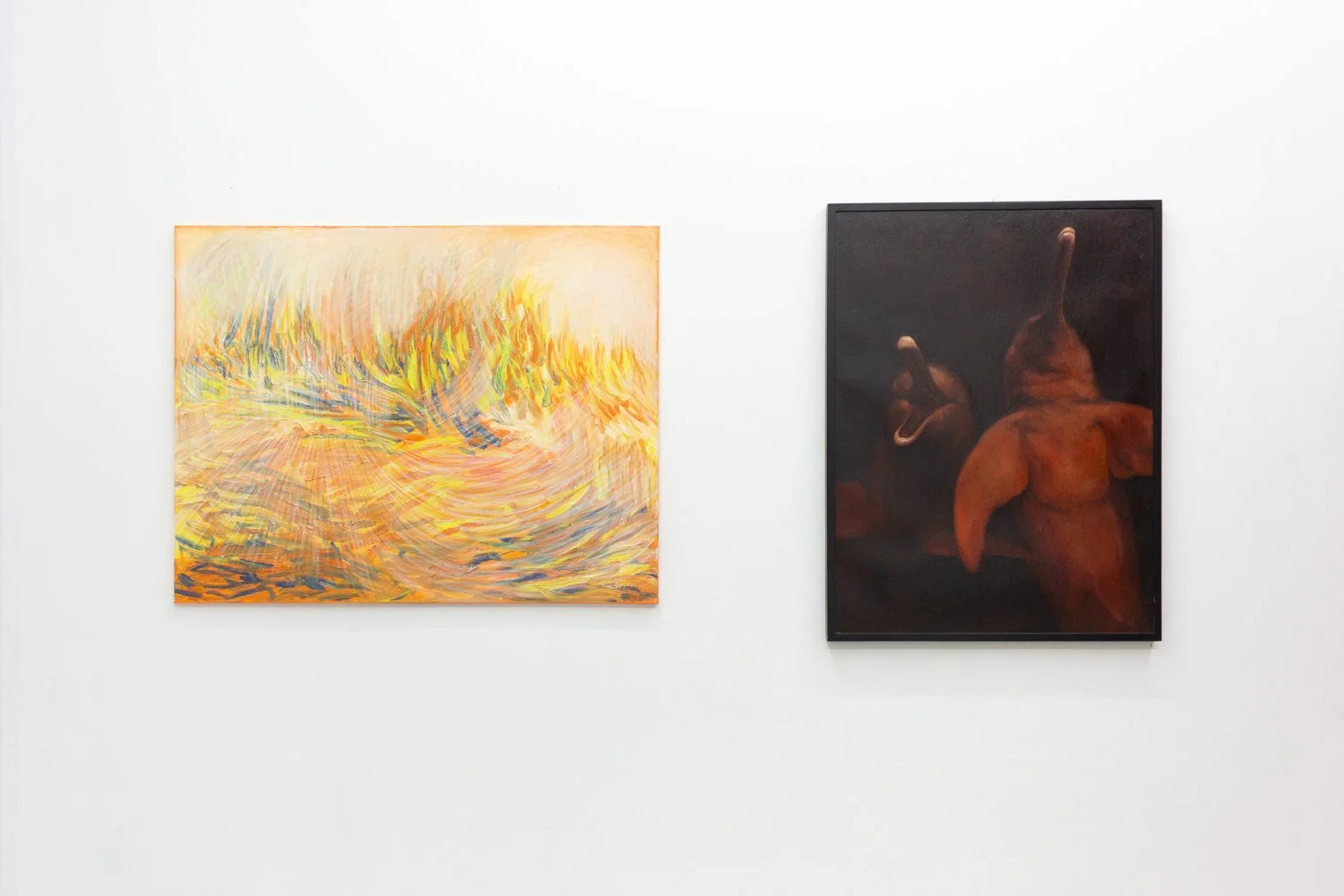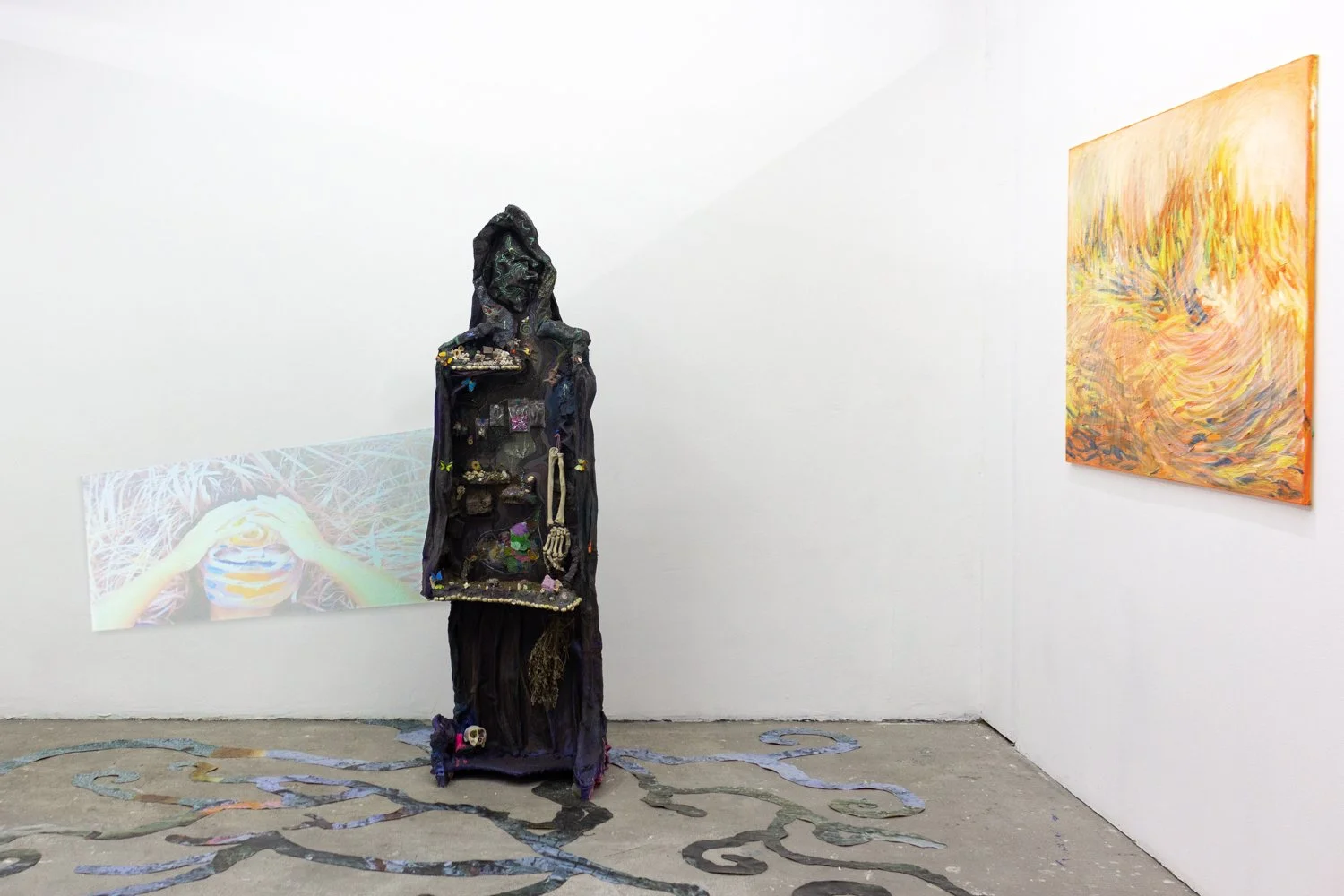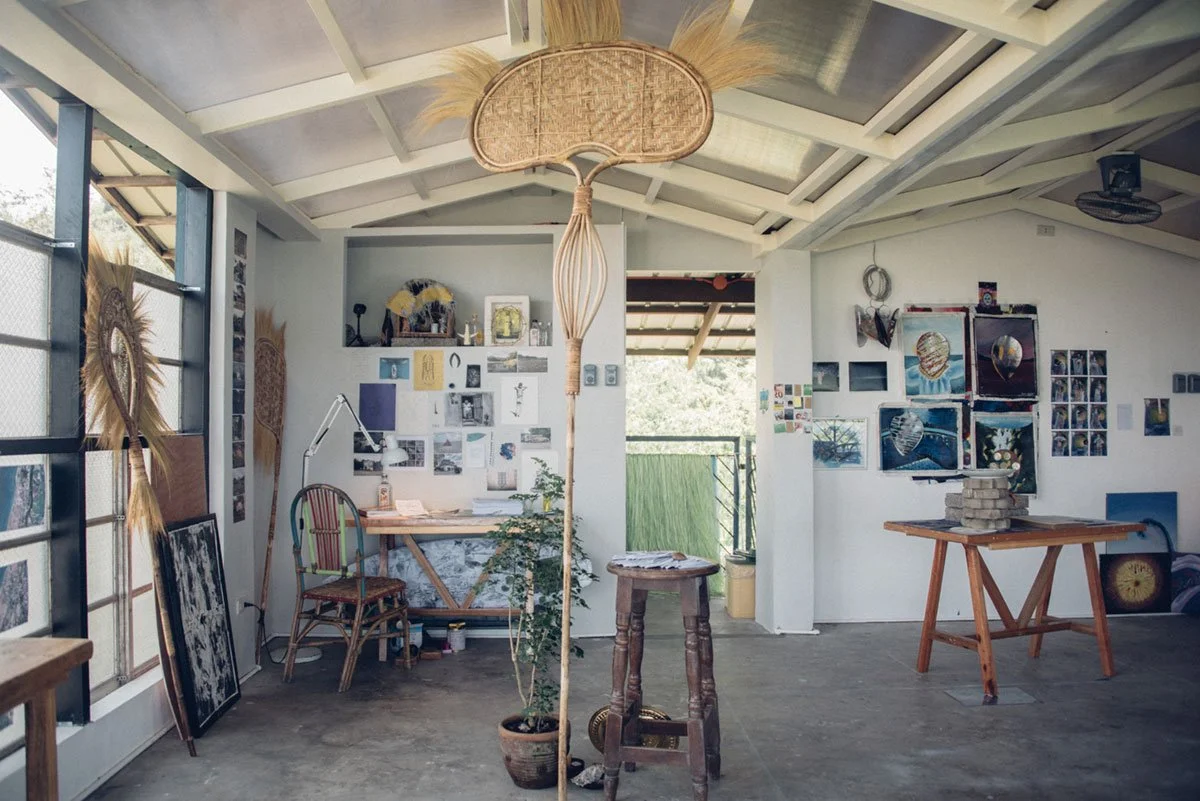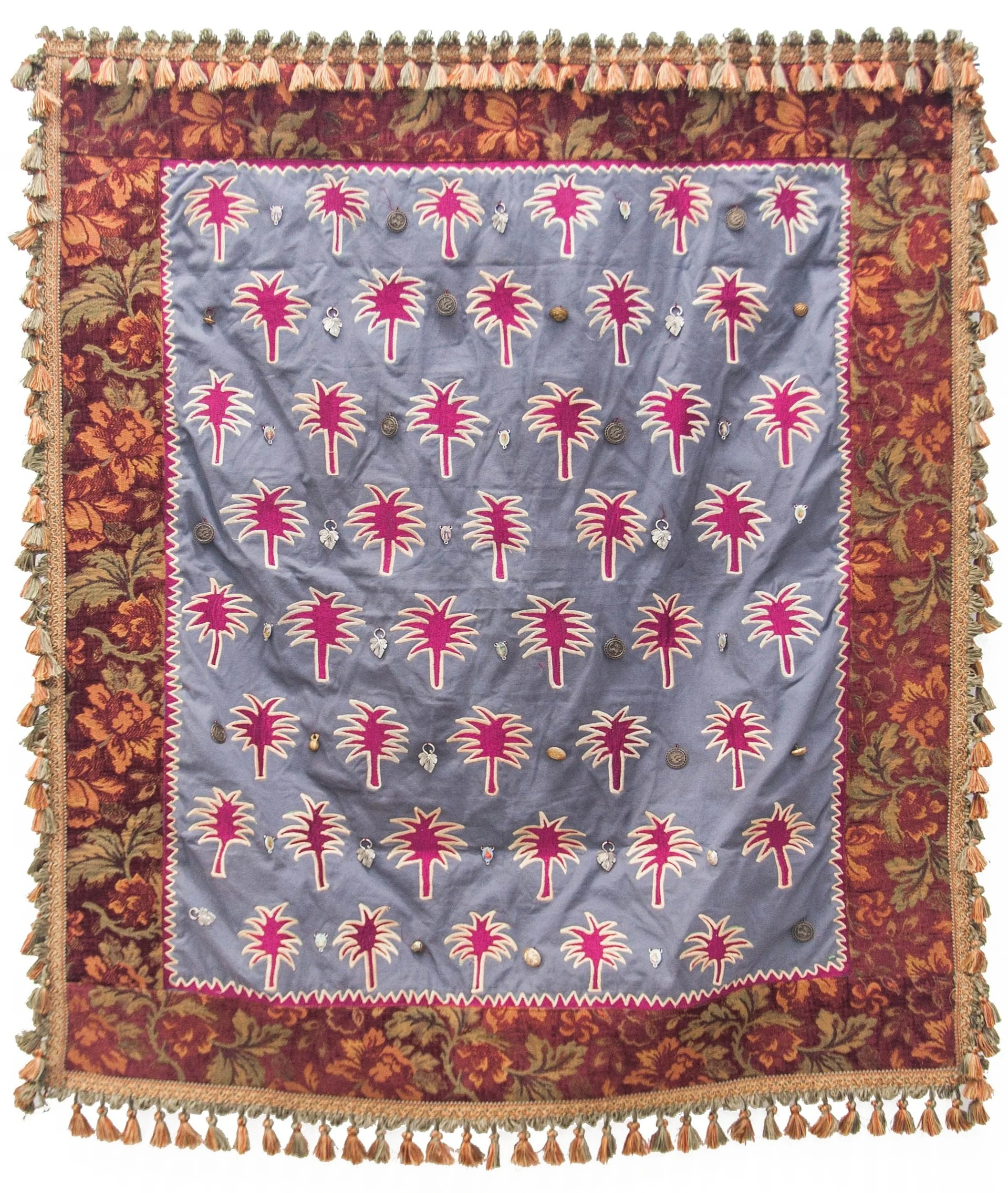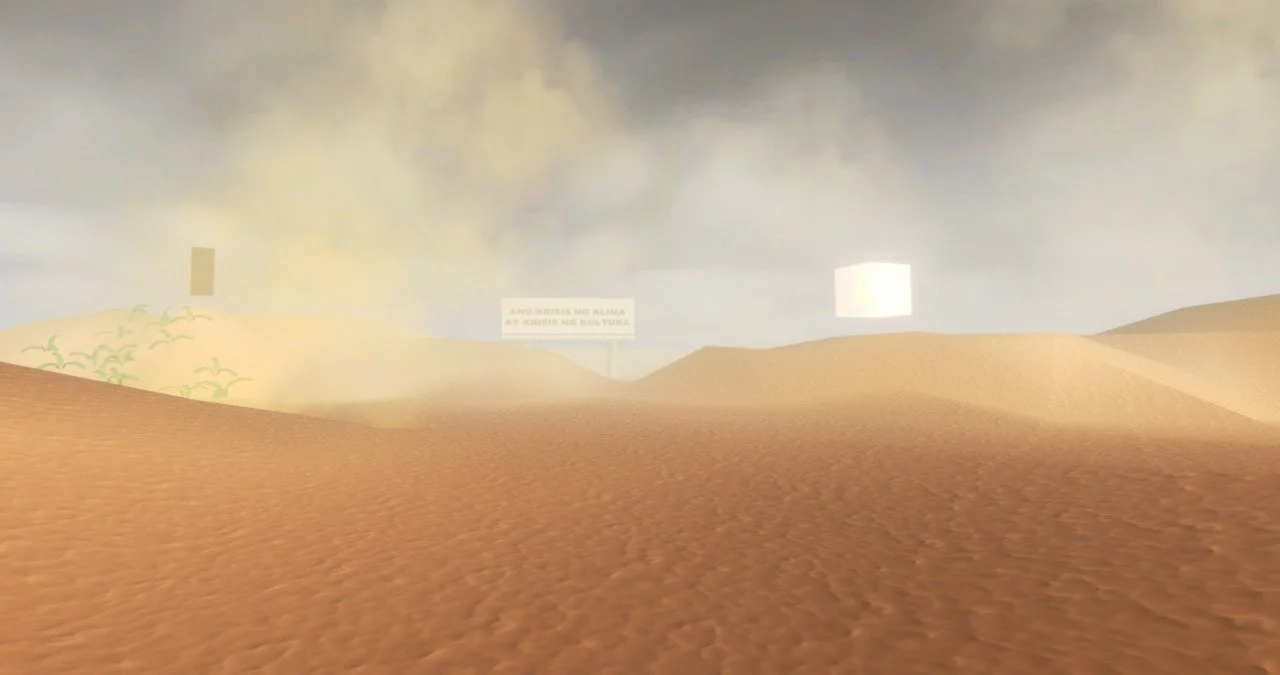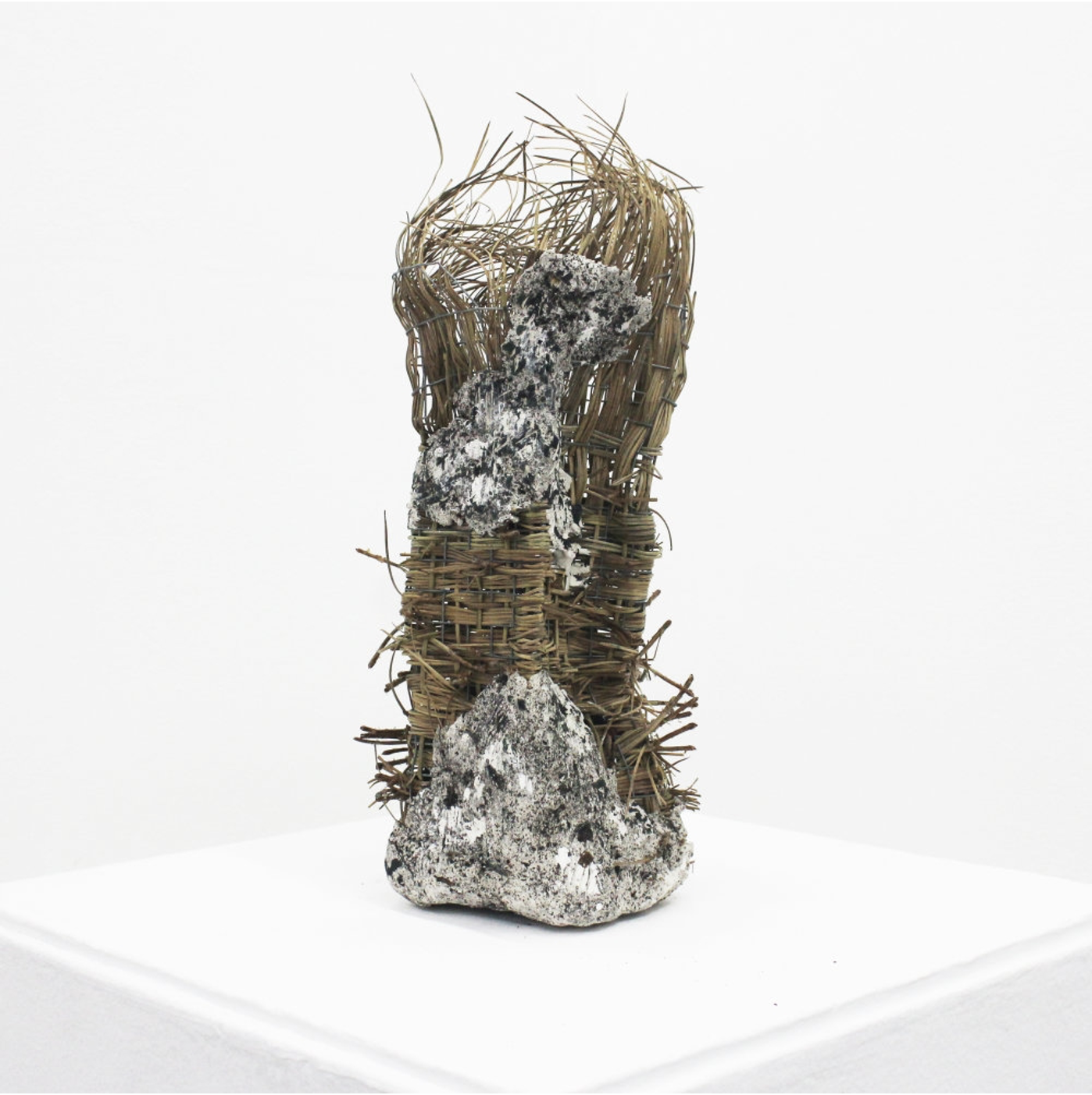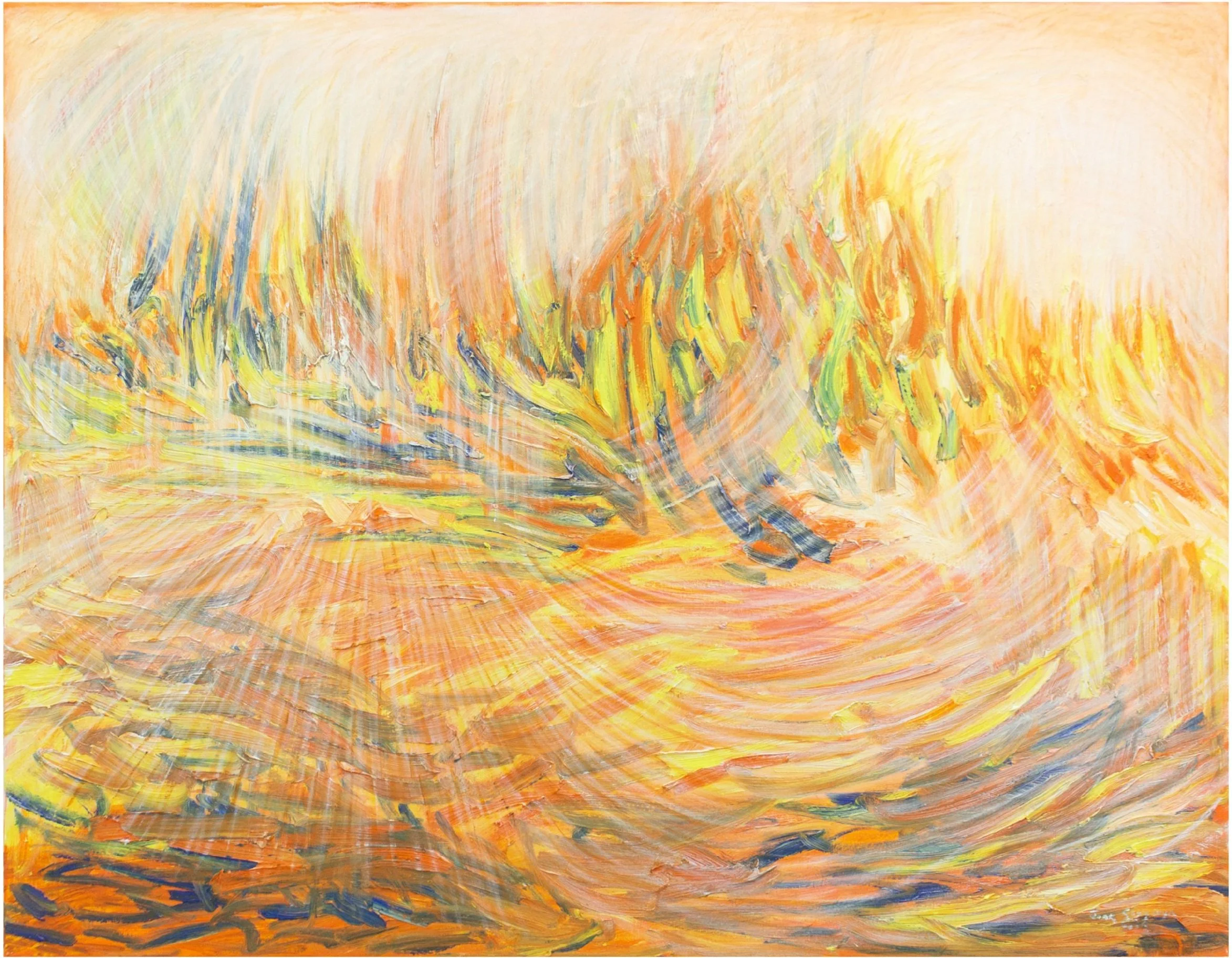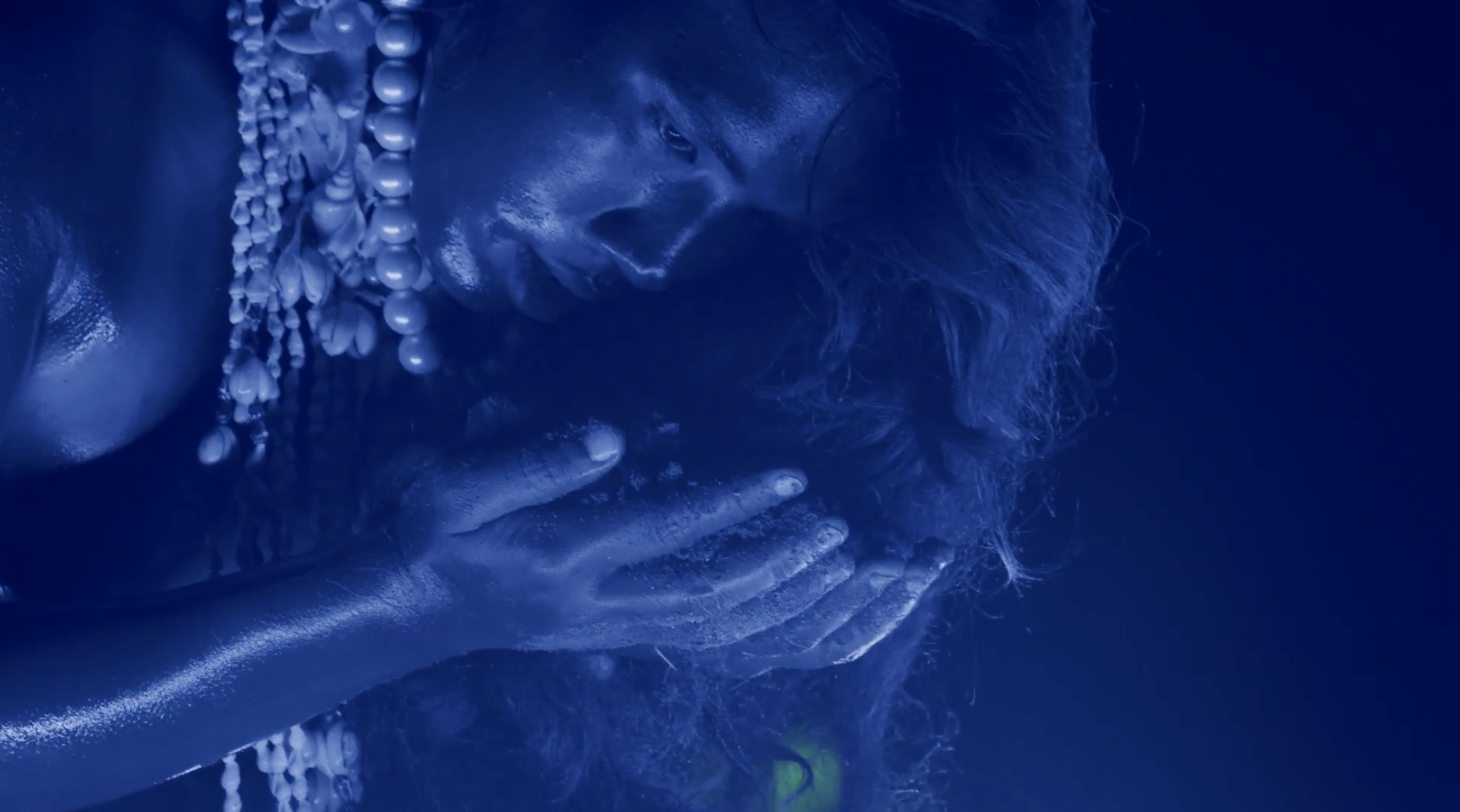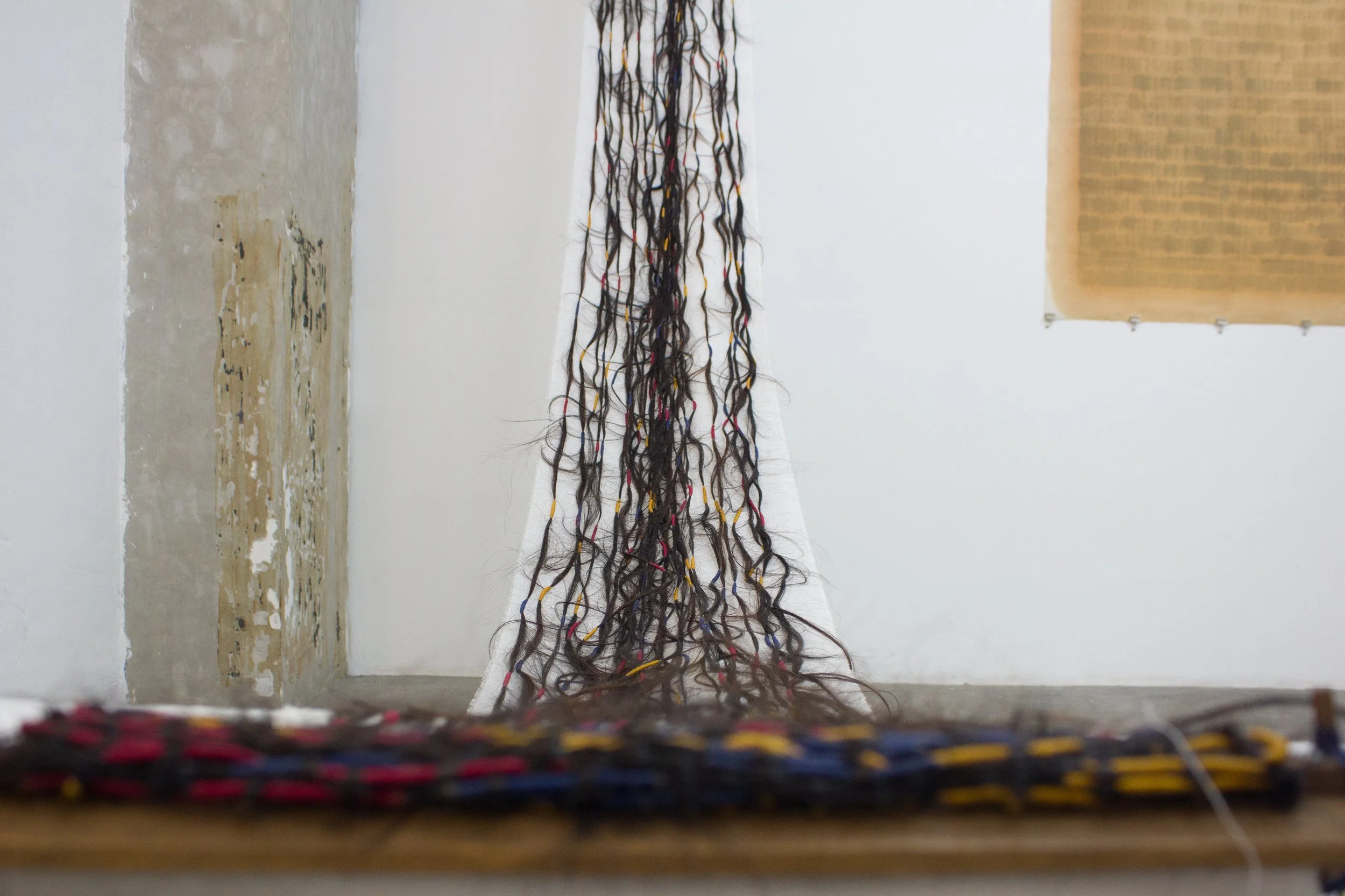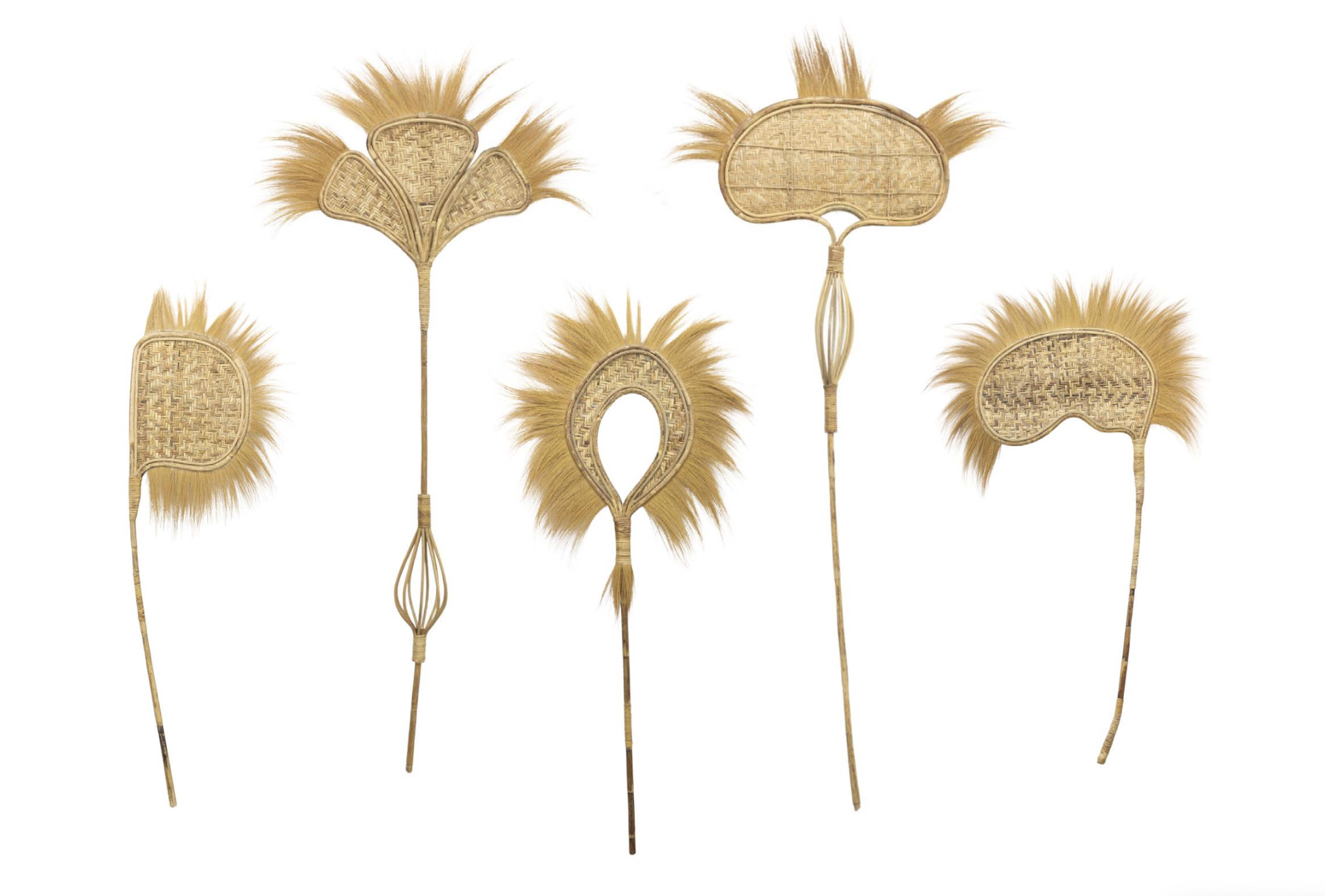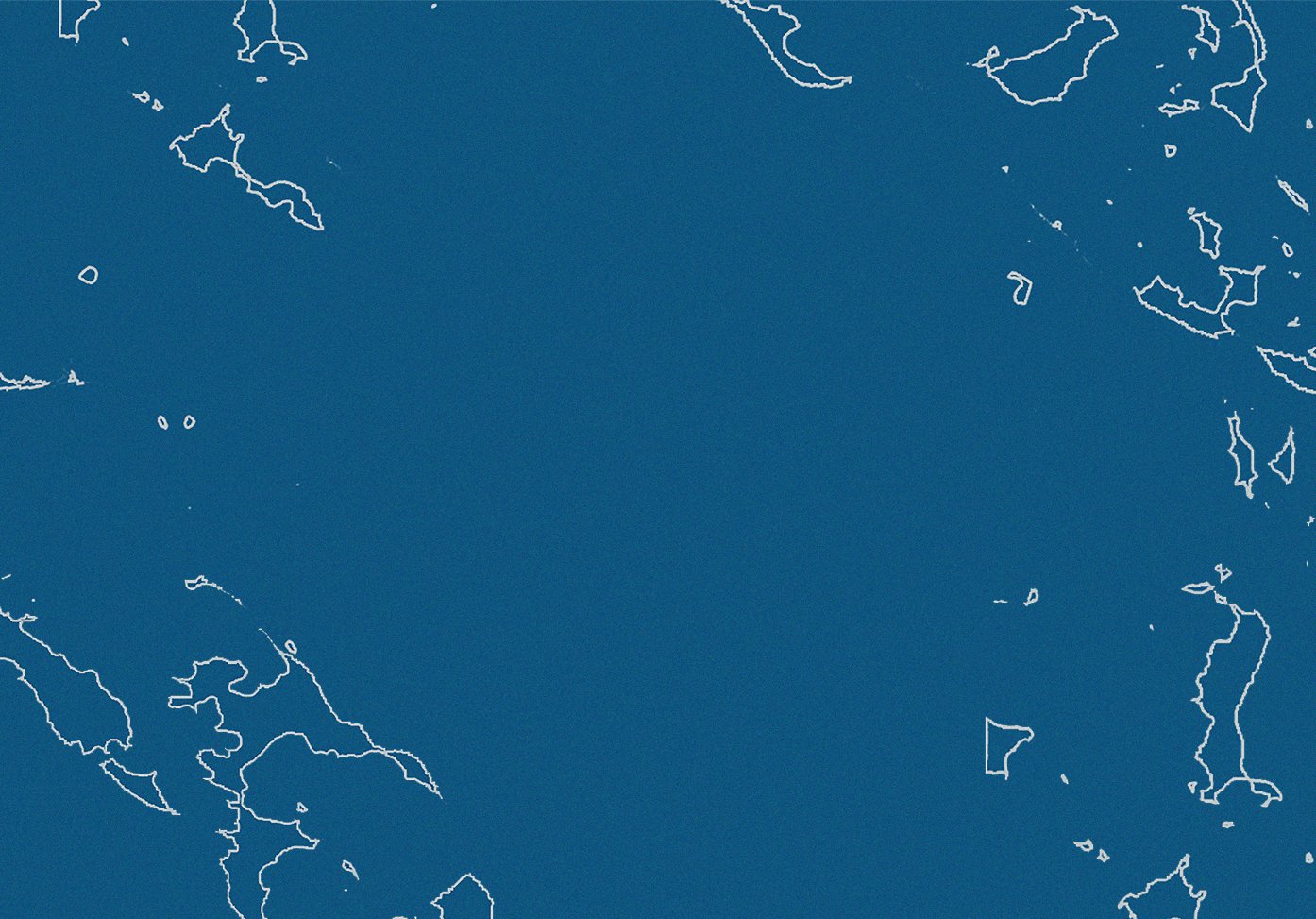
20 April - 26 May 2024
Between Grief and Hope,
an Archipelago
Alaga, Bree Jonson , Catalina Africa, Cian Dayrit, Derek Tumala, Eisa Jocson, Gab Mejia, Irene Bawer Bimuyag, Isola Tong, Jao San Pedro, Joar Songcuya, Joshua Serafin, Lawrence Ypil, Nice Buenaventura, Rocky Cajigan, Ryan Villamael, Veronica Lazo
Curated by EMERGING ISLANDS
What does it mean to think, create, and relate as an archipelago?

The world-as-archipelago hangs not on the universal, but on the particular: it is the world opened up by the polyp that builds a reef; the mushroom that connects a forest; the vine that helps an island hold onto its sand. Not the New World, nor the Old World, but the World as it already is, going about its cycles. It is world-building because the world is always building itself.
Photo courtesy of Emerging Islands
ABOUT EMERGING ISLANDS
Founded in 2021 by four friends and creative practitioners, Emerging Islands is an art-for-ecology collective that brings togethers artists, environmentalists, and frontline communities to respond to the most pressing ecological questions of our times. Based in the coastal town of San Juan, La Union, we seek to grow stories of our islands from the ground up, through our multidisciplinary art residency, field-based research, and community programming. We believe that island stories rooted in ecology, co-creation, and decolonization have the power to transform, connect, and emerge worlds.
Alaga
Paghuhukom ni Dansuli ha Salamin, 2024, Digital painting on canvas, dimensions variable
Born John Chesleigh Nofiel, Alaga is an interdisciplinary illustrator, painter, designer, performer, and ritual practitioner. They are currently working as an apprentice at Tattoo Nebula, a studio in BF Homes, Parañaque that centers on the body work of tattoo and piercings. Their art speaks mostly of the Filipino psyche, spirituality, our natural heritage, and native ecology. They studied Graphics Design and Multimedia, but are forever a student of life, our cycles, our lands and forests.
Bree Jonson
Untitled, 2017, Oil on canvas, private collection, 105 x 79 cm (41.3 x 31 in)
Bree Jonson (1991-2021) painted animals and plants to critique the relationship that humans have with their environment, and the divide that has grown between, a divide that displaces everything except humans as the Other, and lower in importance and heirarchy. By specifically limiting herself to the visual language of non-human beings, she aimed to bridge this gap: to bring out the innate wilderness in human nature, to culminate a sense of interconnectedness, and to ultimately move away from an anthropocentric worldview to one more inclusive of multiple species.
Catalina Africa
Shrine in the Shape of a Shadow, 2022, wood, canvas, cement, epoxy, beads, shells, stones, Ziploc, found seeds, woodshavings, woodglue, found coral, anatomical hand model, oil paint, glitter, pins, spray paint, googley eye, monkey skull, dried mugwort, acrylic paint, soil, LED lights, tarpaulin, dimensions variable
Multi-disciplinary artist Catalina Africa (b. 1988, Manila, Philippines; lives and works in Baler, Philippines) considers shapeshifting to be her primary mode of expression. Working across mediums including painting, sound, sculpture, video, text, and performance, her artworks are invocations to the natural landscape. Resembling spells, songs, love letters, prayers, and maps, her spatial visualization of an environment pays testimony to the Earth’s mysteries and magic. Raised in Manila, the artist now lives and works in Baler, Philippines, along with her husband and child, where she cultivates a devotional practice to Spirit, transmuting Earth song and collaborating with the living land.
Cian Dayrit
DOMINATOR III, 2022, Embroidery on fabric, (collaboration with Henricus), approx. 49 x 44 in (approx.124.46 x 111.76 cm)
Cian Dayrit (born 1989, Philippines) is an interdisciplinary artist whose work investigates notions of space, power and identity as they are represented and reproduced in monuments, museums, maps and other institutionalized media. Working with textile, installations, archival interventions and community based workshops, Dayrit’s work respond to different marginalized communities, encouraging a critical reflection on colonial and privileged perspectives. While informed by the experience of colonialism from the perspective of the Philippines, his work nonetheless defies being tied to a specific position or location. Instead, his work and research cross over geopolitical and supranational bearings.
Dayrit is a member of Sama-samang Artista Para sa Kilusang Agraryo (SAKA), an alliance of cultural workers advocating for land rights and food sovereignty. He is also currently enrolled at the Department of Geography in UP Diliman.
Derek Tumala
Porensiko ng Klimang Tropikal (Tropical Climate Forensics), 2022 - Present, Web-based, Unity for WebGL
Derek Tumala is a visual artist working with emerging technologies, the moving image, industrial materials and objects. His art practice revolves around the realms of science and nature, meditating on the idea of interconnectedness. By forming ecologies and systems of thought, Tumala’s practice traces mutuality between humans and their built and natural environments. Tumala’s impulse is to examine and understand how the world operates and be able to approach visceral truths as material for his work. Tumala’s notable artistic projects were presented in Museum of Contemporary Art and Design - Manila, Art Basel Hong Kong, Formosa Art Fair Taiwan, Georgetown Festival, Malaysia, FLAME H Video art Fair, the Cultural Center of the Philippines. He attended Delfina Foundation A-i-R London Residency in 2023.
Eisa Jocson
Princess Parade, 2018, Single-channel video with sound, 26 mins and 8 secs
Eisa Jocson exposes body politics in the service and entertainment industry as seen through the unique socioeconomic lens of the Philippines. She studies how the body moves and what conditions make it move – be it social mobility or movement out of Philippines through migrant work. In all her creations – from pole to macho dancing and hostess to Disney princess to Superwoman to Zoo animals – capital is the driving force of movement pushing the indentured body into spatial geographies. A host and disruptor, her practice is an embodied archive of Filipino labor.
Gab Mejia
The Passage of Storms, 2018, Archival Pigment Print on Hahnemühle Agave Paper, 50.8 x 101.6 cm (28 x 40 in)
Born 1996, Gab Mejia (he/they) is a queer Filipino photographer, writer, and environmental engineer. His work takes on the climate crisis, biodiversity loss, indigenous knowledge & spirituality, socio-environmental justice, and the broader intersections of culture and nature, for the purposes of policy engagement, science-based programming, and organizational consultancy. He weaves different fabrics of visual storytelling and ecological design through art, photography, and pedagogical research, in an attempt to explore alternative narratives of humanity’s shared yet fraught relationship with the planet, inevitably pursuing our oneness with nature. He is a National Geographic Explorer, and Fellow at the International League of Conservation Photographers.
Irene Bawer Bimuyag
Balatik, 2023, Tapestry, 109 x 126 cm (49.9 x 49.6 in)
Irene Bawer-Bimuyag creates handwoven textiles that are a celebration of life. A designer, embroiderer, and master weaver based in both Baguio City and Lubuagan, Kalinga, her geometric and organic patterns, use of color, and intricate embroidery respond to both traditional and contemporary making. She belongs to a long line of weavers in the Kalinga ancestral village of Mabilong, where backstrap looms are found in most homes, and where handwoven textile is sacred in ritual but has also evolved into a livelihood industry. Her work involves being part of an ecology of traditional motifs and symbols. But she also creates to expand this frame of reference. In a series of work, she embroiders traditional tattoo patterns onto blankets, putting new meaning to what is traditionally sacred on human skin and to the material that protects it.
In making new work, Irene Bawer-Bimuyag takes careful notes of where new patterns move a craft that speaks to where her community is at present, surrounded and often misunderstood by its placement in a formerly “outside world.” Her work, including in traditional dance, is empowered and informed by sustained movement, to take space and persist, to continue creating art that return them to collective ground origin, to the idea of making a home. Her work represents an examination of what material culture holds in both representation and the contemporary indigenous imagination.
Isola Tong
Vessel Of Fire, 2024, Pine Needles, Wire Mesh, Plaster, Bark (collected from a forest fire site in the Mojave desert), 13 x 13 x 33 cm (5 x 5 x 12.9 in)
Isola Tong (b. 1987) is a Filipino-Chinese artist, architect, and theorist whose work spans various mediums, including immersive installations, community-based projects, fiber art, and digital design. Inspired by indigenous craft and animal architecture, she gathers and weaves organic and industrial materials to create vessels that explore the relationship between marginalized bodies, technology, and the environment through a transcultural global-south lens. She questions the assumption that nature and culture are oppositional and mutually exclusive, and contends that environmental issues are politically entangled. She is affiliated with Filipinx feminist and migrant rights organizations in California.
Joar Songcuya
Sea of Fire, 2023, Oil on canvas, 91.4 x 116.8 cm (36 x 46 in)
Joar Songcuya is a Filipino self-taught painter, a seafarer and marine engineer. He has been sailing the world for over a decade as a marine engineer onboard commercial ships and has travelled to over 50 countries and 86 international shipping ports and terminals worldwide. He has done solo painting exhibitions around his life at sea: “The History of Water”, Altro Mondo Gallery (2021) , “Atlantiko, Pasipiko, Artiko”, Visayas Islands Visual Arts Exhibition and Conference (2021-2022), “The Sea Is not a Quiet Place”, Altro Mondo Gallery (2022) and “Pilgrimage to the Ancient Seas”, Wan Gallery, Art Central Hongkong (2024).
He presented “Sea People, Country Shores”, at Koganecho International Artist’s Network Yokohama, Japan (2023) and “At the Edge of Land- “Passage to Suez: Passage of Oil” (2023), Hayy Jameel, Jeddah, Saudi Arabia.. His ongoing research “The Seamanship Project” based on the lives of Filipino sea-based migrant workers was supported by the NoExit Grant Para Site Hong Kong.
He is interested in water and statelessness, marine engineering and sea-based labor; issues that are pertinent to his homeland, the Philippines—a maritime country.
Jao San Pedro
Site 1, 2023, Hair and oil on canvas, 98 x 91 cm (38.5 x 35.8 in)
Jao San Pedro (b. 1998, Philippines) is a visual artist exploring the generative potentials of loss and error. Her process-based practice filters data and material through transcategorial frameworks, rendering trace and surface, sound and gesture, doubles and simulacra.
Joshua Serafin
Creation Paradigm, 2022, Single-channel video with sound, 9 mins 41 secs
Joshua Serafin is a multi-disciplinary artist who combines dance, performance, visual arts, and choreography. Born in the Philippines, they are currently based in Brussels. They are a house artist of Viernulvier for the season 2023-2027. They have been officially invited to Participate in the 60th International Art Exhibition of La Biennale di Venezia curated by Adriano Pedrosa. Exploring themes of transmigration and queer politics, Joshua centers their practice on Otherness, aiming to translate ideas of alterity and otherworldly narratives into embodied performance and forms of speculation. Their series “Cosmological Gangbang” is the result of their most recent artistic research, having unfolded in several iterations across different media, namely: Timawo, Creation Paradigm, VOID, and PEARLS, for which they are currently touring.
Serafin’s artistic process is an intense sociological exorcism of Filipino identity about global ideologies, and contemporary phenomena, unpacking the historical violence of its feudal contemporary society and its dehumanizing normality. Enfolding these sites of creation into queer + trans methodologies intuited from within tropical myth but also inspired by the dreamwork of a nonbinary cosmopolis populated by figures emancipated from colonial gender and embodied by turns in diverse states of solemnity and play. Joshua’s globally acclaimed performance is committed to dwelling within interstitial spaces, a refusal to participate in dimorphic structures so they can craft an idiom where they can speak from the said in-betweenness.
Lawrence Ypil
At The Beach, 2009, Published in The Highest Hiding Place, (Quezon City: Ateneo de Manila University Press)
Lawrence Ypil is an award-winning poet and essayist from Cebu. His work explores the intersection of text and image, and the role of material culture in constructing cultural identity. In 2020, he was a finalist for the Lambda Literary Awards and on the longlist for The Believer Book Awards for "The Experiment of the Tropics", the winner of the inaugural Gaudy Boy Book Prize. Ypil has received MFAs from Washington University in St. Louis and from the Nonfiction Writing Program of the University of Iowa. He teaches creative writing at Yale-NUS College.
Nice Buenaventura
Rocks Scattered by the Last Breaths of the Pacific, 2023, Single-channel video with sound, 50 secs
Nice Buenaventura is a visual artist from Manila. Her methods revolve around the offloading of tensions, often between ethics and aesthetics, through drawing, painting, installation and citizen-ethnography. This extends to her project called Tropikalye, a mutual co-learning resource on vernacular culture in tropical and postcolonial Philippines. Using various strategies and modes of productivity allows her work to become generative expressions of concern, exploring new semantics adapted to change scenarios and future conditions.
Nice holds postgraduate degrees in media and arts technology from Queen Mary, University of London and Ateneo de Manila University. She has presented work and participated in art-adjacent projects in Bacolod, Bangkok, London, Manila, Melbourne, Paris, Ruang, Siem Reap, Singapore and Zurich. In 2021, she received the Cultural Center of the Philippines - Thirteen Artists Award and the Ateneo Art Awards - Fernando Zóbel Prize for Visual Art.
Rocky Cajigan
Hairloom (segment from Hairloom 2018), 2018, Human hair, cotton thread, gauze, copper, wood, dimensions variable
Born in 1988, Rocky Cajigan was largely influenced by the 1990s. A group of artists working in the United Kingdom, who came to be known as the YBAs, or Young British Artists, defined the artistic culture of the 1990s. Affiliated loosely by their age and nationality, they were a diverse group of practitioners. A number of the YBAs attended the Royal College of Art and Goldsmiths in London, and were favoured by the ‘super collector’ of the time, Charles Saatchi. The most famous member of the group is Damien Hirst, and other members included Chris Ofili, Tracey Emin, Marc Quinn, Gavin Turk, Sarah Lucas and Sam Taylor-Johnson (née Sam Taylor-Wood).
The YBAs became famous for their use of shock tactics and sensationalism, alongside their use of throwaway materials, wild lifestyles and an attitude that was rebellious yet enterprising. Due to the high amount of media coverage that they received, they dominated British art during the 1990s, and their work was epitomised in the group show ‘Sensation’. The art world was influenced by many trends throughout the decade, and was characterised by the derisive sculpture of Maurizio Cattelan, and sensitive, conceptual advancements as represented in the work of artists including Felix Gonzalez-Torres.
Ryan Villamael
Native Houses, 2024, framed paper work, 17.38 x 18.5 x 1.75 in (44 x 47 x 4.5 cm)
Ryan Villamael (b. 1987), as the foremost artist working with paper as sculptural medium, has been exploring themes, tensions, and trajectories of his chosen material since his first solo exhibition, Cut Felt, a decade ago at Silverlens, which currently represents him. Beginning with a tactile and intuitive approach into one of the most delicate—and historically enduring—human inventions, which entailed cutting out shapes, details, and holes without a pre-planned design and resulted in a staggering array of abstract metamorphoses, Villamael then shifted his attention to how paper could become a locus of multiple and overlapping meanings, through which ideas on the natural world, domestic sphere, and urban landscape may be negotiated.
Veronica Lazo
Handheld Landscape Series, 2023, Rattan and tiger grass (collaboration with Lito dela Cruz), dimensions variable
Veronica Lazo is an artist and industrial designer whose works are commentaries that re-evaluate how civilization interacts with nature. Responding to modernist notions of natural resources, and the intersections of craft, industry, and technology, Lazo’s work reappropriates forms, imagery and process to challenge the imaginary of dominant ecosystems. Her explorations into these themes stem from the need to critically situate design into reimagining a vernacular of the global south. Lazo received her BFA from the University of the Philippines, Diliman, where she teaches as part of its Industrial Design faculty. She has joined residencies and exhibitions across the Philippines and Singapore.
She was recently named one of the finalists at the Ateneo Art Awards – Fernando Zóbel Prizes for Visual Art for her first solo exhibition.
Selected Works from Between Grief and Hope, an Archipelago
Joshua Serafim, Creation Paradigm, 2022, Single-channel video with sound, 9 mins 41 secs
Shapeshifting as Practice
(for Hyperobjects.IO)
Catalina Africa, 2023
Single-channel video with sound, duration 15 min 16 sec
Edition of 3
dimensions variable
Porensiko ng Klimang Tropikal (Tropical Climate Forensics)
Derek Tumala, 2022 - Present
Web-based, Unity for WebGL
Eisa Jocson, Princess Parade, 2018, Single-channel video with sound, 26 mins and 8 secs


